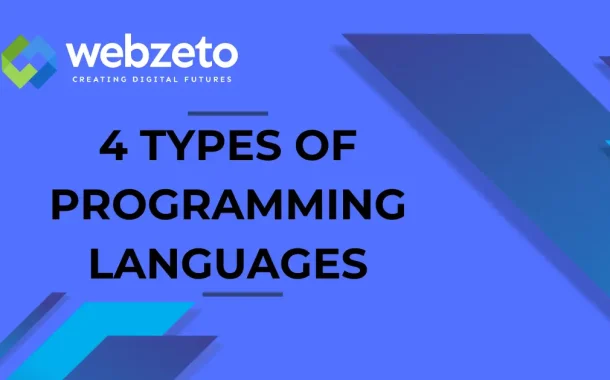It helps you choose the right one for your project. Some languages are faster, while others are easier to learn. Knowing the differences can save you time and effort. It also helps you become a more flexible and skilled programmer.
Table of Contents
Table of Contents
1. Procedural Programming Languages
Procedural programming languages are built on a sequence of instructions that the computer follows step-by-step. In these languages, the program is divided into small parts called procedures or functions. Each function performs a specific task, such as adding two numbers or sorting a list, and the computer runs these tasks in a particular order to achieve the desired outcome.
How Procedural Programming Works
Procedural programming focuses on breaking down a problem into smaller, manageable tasks. These tasks are written in a specific order and are called one after another to complete the program. This approach makes it easier to understand the flow of the program. For example, if you are creating a program to calculate a total bill, you might have functions to add up prices, calculate taxes, and apply discounts, all done in a clear, logical order.
Examples of Procedural Programming Languages
Some of the most popular procedural programming languages are C, Pascal, and BASIC. These languages are widely used for tasks like scientific calculations, simple games, and data management. They are also great for learning fundamental programming concepts like loops, conditionals, and variables, which are important for any programmer to understand.
Pros and Cons of Procedural Programming
Procedural programming languages are simple and easy to learn, especially for beginners. They offer a straightforward way to write code for tasks that follow a clear, linear process. However, they may not be the best choice for very large or complex programs. In such cases, other programming styles, like object-oriented programming, might provide better tools for organizing code and managing complexity.
2. Object-Oriented Programming Languages
Object-oriented programming (OOP) languages are designed to structure software around “objects” rather than just functions and procedures. An object is a self-contained unit that combines both data (like variables) and the functions (methods) that operate on that data. This approach helps in modeling real-world entities, making programs easier to understand, develop, and maintain.
How Object-Oriented Programming Works
In OOP, the focus is on creating objects that represent real-world things, such as a car or a bank account. Each object has attributes (like the color or balance) and behaviors (like driving or withdrawing money). Objects can interact with each other to perform complex tasks, making the code more modular and reusable. Key concepts in OOP include classes, inheritance, polymorphism, and encapsulation, which help in building flexible and scalable software.
Examples of Object-Oriented Programming Languages
Some popular object-oriented programming languages include Java, C++, Python, and Ruby. These languages are used for building large-scale applications, including web and mobile apps, games, and enterprise software. Java, for example, is widely used for building Android apps, while C++ is often chosen for game development due to its performance capabilities.
Pros and Cons of Object-Oriented Programming
Object-oriented programming languages offer several advantages, such as code reusability, easier maintenance, and scalability. They make it simpler to manage complex software by organizing it into objects. However, they can also have a steeper learning curve for beginners and may require more resources to run compared to procedural languages. Despite this, OOP remains a popular choice for many types of software development due to its flexibility and effectiveness in managing complex systems.
3. Functional Programming Languages
Functional programming languages focus on using mathematical functions to solve problems. Unlike procedural or object-oriented languages, which rely on a sequence of instructions or object interactions, functional programming emphasizes the use of pure functions—functions that always produce the same output for the same input and have no side effects. This approach makes the code predictable, easier to test, and more reliable.
How Functional Programming Works
In functional programming, the core idea is to build software by composing functions. Functions are treated as first-class citizens, meaning they can be passed as arguments, returned from other functions, and assigned to variables. This style encourages writing small, reusable functions that perform specific tasks. Functional programming also avoids changing data directly, favoring immutable data structures instead. This immutability leads to fewer bugs and simplifies parallel processing, making functional languages ideal for applications that require high reliability and efficiency.
Examples of Functional Programming Languages
Some of the most well-known functional programming languages include Haskell, Lisp, Erlang, and Scala. These languages are used in fields like finance, data analysis, artificial intelligence, and telecommunications, where reliable and efficient processing of data is crucial. For example, Haskell is known for its strong emphasis on pure functions, while Scala blends functional and object-oriented programming features, providing flexibility for various types of software projects.
Pros and Cons of Functional Programming
Functional programming offers several advantages, such as improved code reliability, easier debugging, and better support for concurrent and parallel processing. It encourages clean, concise code by using pure functions and immutable data.
However, functional programming can be harder to learn, especially for those accustomed to other styles. It may also be less intuitive for tasks that naturally involve changing states, such as user interfaces. Despite these challenges, functional programming is highly valued for its robustness in specific domains like data science and finance.
4. Scripting Programming Languages
Scripting programming languages are designed for writing scripts, and short programs that automate tasks, manipulate files, or control software applications. Unlike general-purpose languages, scripting languages are usually interpreted, meaning the code is executed directly without needing to be compiled first. This makes them ideal for quick development, testing, and automation tasks.
How Scripting Languages Work
Scripting languages are typically used to automate repetitive tasks, handle simple programming needs, or “glue” different software components together. They are easy to write and modify, allowing developers to quickly create and change scripts without extensive knowledge of programming. Scripts can be run inside a web browser, like JavaScript for web pages, or on servers, like Python for backend processes. They are also commonly used in system administration and software testing to automate workflows and improve efficiency.
Examples of Scripting Programming Languages
Popular scripting languages include Python, JavaScript, Ruby, and PHP. Each language has its unique use cases: JavaScript is mainly used for adding interactive features to websites, while Python is favored for data analysis, automation, and web development. Ruby is known for web applications, especially with the Ruby on Rails framework, and PHP is widely used for server-side scripting to build dynamic web pages.
Pros and Cons of Scripting Languages
Scripting languages offer several benefits, including ease of learning, quick development, and flexibility. They are ideal for rapid prototyping, automation, and integrating different systems. However, they may not be as fast or efficient as compiled languages, especially for large-scale applications. They are best suited for smaller tasks or situations where development speed and ease of use are more important than maximum performance. Despite these limitations, scripting languages remain popular due to their versatility and ability to simplify complex programming tasks.
Conclusion
Programming languages come in different types, each with its strengths. Procedural languages are straightforward and great for simple tasks. Object-oriented languages bring order and flexibility to complex projects. Functional languages focus on reliability and precise data handling. Scripting languages are quick and adaptable, perfect for automating tasks and web development.
Choosing the right language depends on what you need to achieve. You can pick the best tool for the job if you understand the differences. Each type offers unique benefits, whether you are building an app, analyzing data, or creating a dynamic website.














